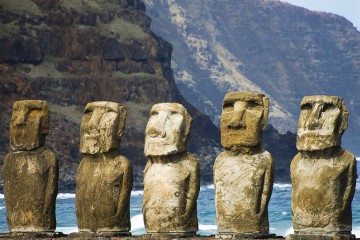
Discover Easter Island
Come and discover the mysteries of this isolated South Pacific Island, Easter Island, otherwise known as Rapanui, and witness mythical Moai statues.
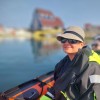
Laura Pattara | 20 November 2025
With credit to Tara SutherlandFew places on Earth feel as remote and mystifying as Easter Island, or Rapa Nui as it’s known to its people. This small volcanic island in the Pacific, famous for its giant stone statues, has long intrigued travellers and archaeologists alike. Viva Expeditions’ General Manager, Tara Sutherland, recently spent six days exploring its culture, history, and landscapes, from sunrise over ancient stone figures to seafood dinners by the sea.

Standing through the ages, Easter Island's Moai statues continue to captivate.
Here’s what she found, and what you should know before planning your own trip.
Follow the links to discover this unforgettable journey.
How Long Should You Plan to Stay on Easter Island?
Must-See Sites on Easter Island
Food, Culture, and Island Life
Sustainable Tourism and Preservation
Top FAQs about Visiting Easter Island
Easter Island sits in the southeastern Pacific Ocean, about 3,700 kilometres off the coast of mainland Chile. It is one of the most remote inhabited islands in the world, and that isolation is part of its magic. Although it belongs to Chile, politically and in parts culturally too, Rapa Nui’s roots lie deep in Polynesia. The mix of Latin and Pasifika cultures creates an identity unlike anywhere else, where both Spanish and the local Rapa Nui language are spoken.
The island itself is small, only 164 square kilometres in size, and formed from three extinct volcanoes. Around 8,000 people live here, most relying on tourism for their livelihoods. During the pandemic, the island took a 28-month break from visitors, which saw locals return to traditional farming and fishing before tourism slowly began to recover.

Tara stands before the moai of Ahu Tongariki, once toppled by a tsunami and later raised once again during a major 1990s restoration.
Tara’s Tip: Easter Island may be as modern as it comes, but out here, floating in the middle of nowhere, you feel far removed from the rest of the world. As a travel destination, it is perfect for those looking for 'out there' destinations that are incredibly fascinating yet never get overrun by tourist crowds.
The only way to reach Easter Island is on a LATAM Airlines flight from Santiago, Chile. It's about a five-hour journey across open ocean, and the moment you catch sight of the island from the window, it really hits you how far you've come. There used to be flights from Tahiti, too, and locals hope those will return one day, but for now, it's just Chile to Rapa Nui.
Because flights are limited, it’s best to book early, especially if you’re planning to travel in summer. This controlled access is a good thing, though. It keeps visitor numbers steady and supports the island’s focus on sustainability.
Every archaeological site on the island forms part of Rapa Nui National Park, a UNESCO World Heritage area, so you’ll need a park pass to enter. They're easy to buy on arrival or through us when booking your tour. Just make sure to keep them safe as rangers do check them often.
Tara’s Tip: Pair your visit to Easter Island with a longer Chile adventure. You've come a long way; might as well make the most of it!
Easter Island has a surprisingly mild, subtropical climate, so it’s pleasant all year. The warmest and driest months are from September to March, when the island is at its liveliest. Between April and August, things quieten down a little, and while there is more rain, it is also even more peaceful.
If you visit in February, you might catch the Tapati Rapa Nui Festival, which celebrates local culture with music, dancing, and traditional competitions. Tara’s trip fell outside the festival, yet she still felt that same energy everywhere she went and even enjoyed a fun island night.

Cultural shows highlight Easter Island’s extraordinary fusion of Polynesian ancestry and South American spirit.
Tara spent five nights and six days on the island and found it just right. It gave her time to see all the major sites, take a few walks, swim at the beach, and still have moments to simply sit back and enjoy the view.
You could do it in four nights if you’re short on time, but flights don’t run daily, so check the schedule carefully before booking. The slower pace is part of the experience, so it’s worth giving yourself a little extra time.
Here are the bits you can't miss!
This is where the Easter Island statues were born. Hundreds of unfinished statues still lie half-carved in the rock, frozen mid-creation. Standing among them feels otherworldly. Tara said, “It’s like the sculptors just stepped away for lunch and never came back.”
The island's most famous spot, Ahu Tongariki, is a ceremonial platform lined with fifteen moai facing inland. Watching the sunrise here, as the first light spills over their faces, is arguably the most iconic moment you can have on Rapa Nui.
White sand, turquoise water, and moai gazing over the bay make Anakena one of the most striking spots on the island and perfect for a swim. Tara spent an afternoon here and said it felt surreal floating in the warm water under their watchful eyes.
On the southwestern corner of the island lies the crater of Rano Kau, its floor covered in lush vegetation. At the rim sits Orongo, an ancient ceremonial village once used for the Birdman competition, an ancient ritual of courage and endurance. From here, the views out to sea and the nearby islets are spectacular.

Tara at the rim of Rano Kau, the vast volcanic crater that shelters one of Easter Island’s most striking natural landscapes.
The island's highest point is 508 metres above sea level. The hike up is gentle but steady, and the reward is a complete 360-degree view of the island and endless ocean beyond. Tara calls it "one of the most humbling hikes I've ever done" because once she reached the top, and saw ocean all round, she realized what a tiny speck of land she was standing on. If you’d like to experience the same sense of wonder, minus the actual hiking part, you also have the option of a horseback ride to the top.
Rapa Nui’s volcanic origins have created a network of tunnels and caves, some of which you can explore with a guide. They were once used as orchards to protect crops from the harsh wind and offer a fascinating glimpse into the island’s geological past. Even today, you will still find anything from banana palms to avocado trees thriving here!
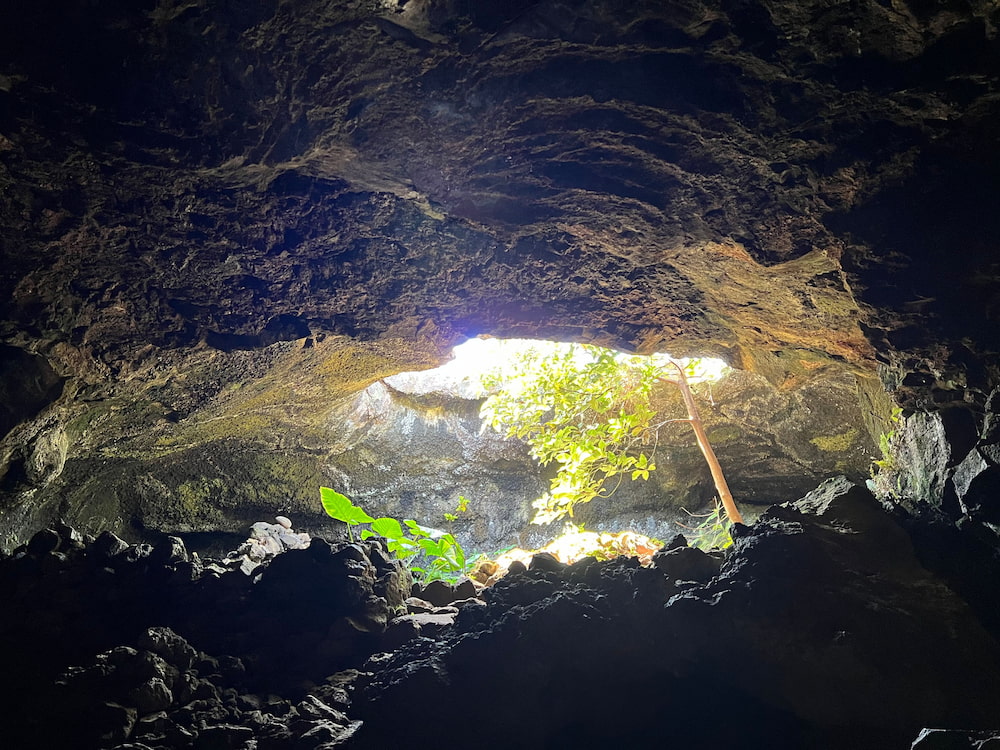
Caves and lava tubes were once an important part of daily life on Easter Island.
More than a place, this one is an experience Tara urges everyone to plan into their itinerary. “This was an absolute highlight for me. Just chilling at the end of a day, sprawled on the grass watching the sunset by the moai at Ahu Tahai. A magical way to end the day! "
Tara’s Tip: There’s plenty to enjoy on the island, from great food to lazy afternoons by the sea, so don’t try to see everything straight away. Pick one or two highlights each day and leave the rest of your time for soaking up island life.
Seafood is at the heart of Rapa Nui’s cuisine, all of it fresh, locally sourced and infused with abundant Latin American flair. You’ll find it grilled, baked, or steamed in earth ovens alongside plantains and root vegetables. Tara still talks about one meal she had — pan-fried tuna with banana gnocchi and pesto. “It was so fresh and unexpected,” she said. “That mix of sweet and savoury flavours was incredible.”
Pascuense food offers one of the clearest expressions of Rapa Nui’s mix of Latin and Polynesian traditions.
Viva Expeditions partners with several lovely properties on the island, including Nayara Hangaroa, where Tara stayed. "As I was being shown to my room, they told me it's now called the John Travolta Suite because he stayed there the year before," she said. "My guide mentioned a few other celebrities, too. Seems even Hollywood can't resist the mystery of Rapa Nui."
The hotel blends comfort with local style, featuring architecture inspired by traditional Rapa Nui houses, gorgeous ocean views, a pool and a great bar from where to watch the sunset. For something smaller, there are charming lodges and family-run guesthouses too.

Feel like a celebrity with world-class service at Nayara Hangaroa.
After being closed to visitors for more than two years, Rapa Nui reopened in 2022 with a renewed focus on sustainability. Water is scarce here, so the community is careful about managing resources and visitor numbers.
The entire island is essentially an open-air museum, and you'll notice rangers at most archaeological areas. They play a big role in preserving the island's treasures and keeping tourism low-impact.
“The locals are doing a fantastic job managing tourism sustainably,” Tara said. “It feels authentic, well cared for, and still wonderfully unspoiled.”
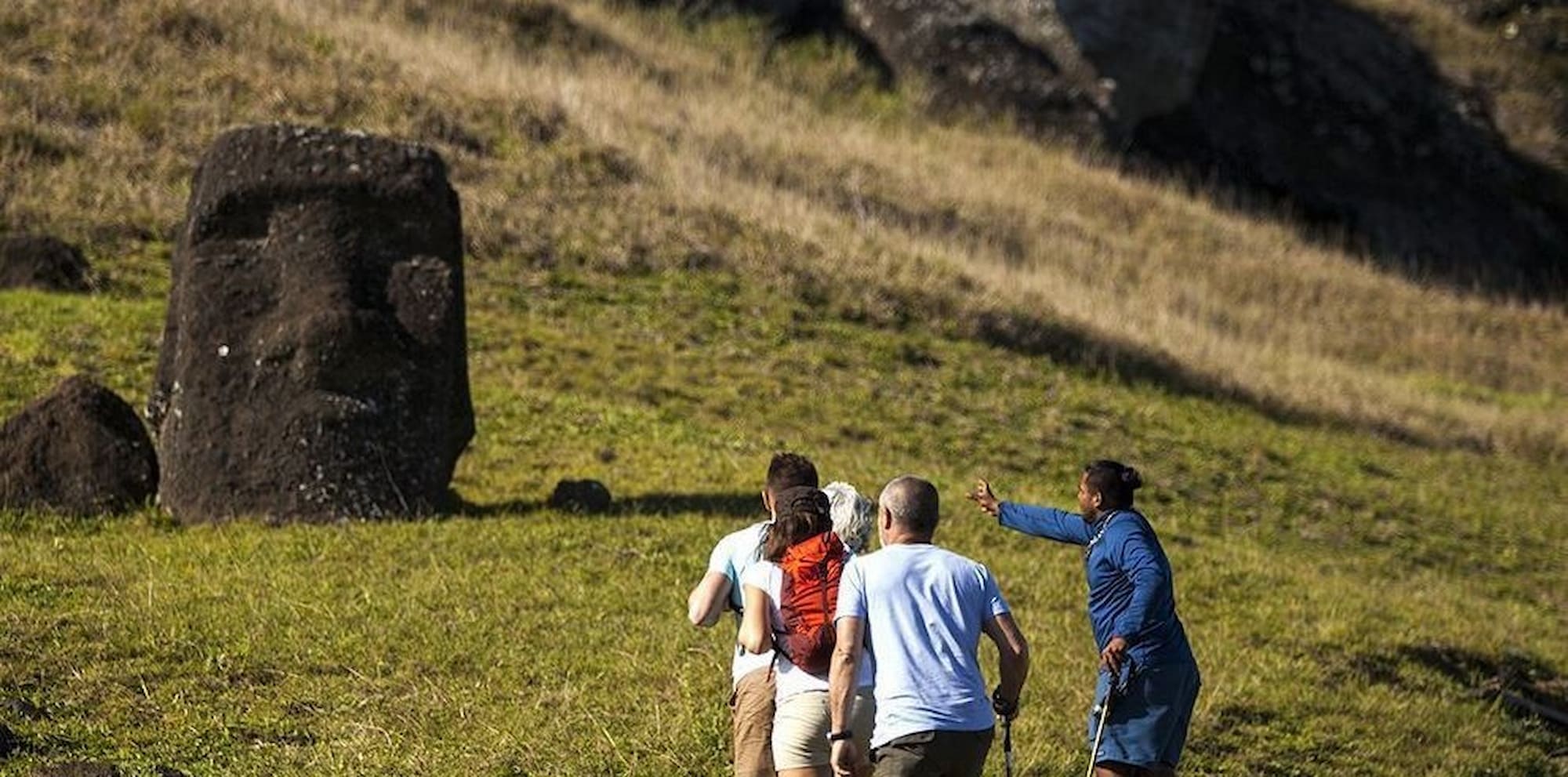
Exploring with a local guide brings Rapa Nui’s history to life while supporting the island’s sustainable tourism efforts.
Where is Easter Island located?
Rapa Nui floats alone in the southeastern Pacific Ocean, around 3,700 kilometres off the coast of Chile. Its nearest inhabited neighbour is tiny Pitcairn Island, more than 2,000 kilometres away, which gives you a sense of just how remote this volcanic speck of land really is.

Source: Wikimedia
How do you get to Easter Island?
The only flights on offer at the moment are with LATAM Airlines from Santiago, Chile. There used to be connections from Tahiti, too, but those were suspended during the pandemic haven't resumed yet.
How long should I stay on Easter Island?
Plan for four to six days. That gives you time to explore the highlights at a relaxed pace, enjoy the beach, admire the stunning sunsets and still have space to unwind and get into island life.
What are the must-see attractions on Easter Island?
Don't miss Rano Raraku Quarry, Ahu Tongariki, Anakena Beach, Rano Kau Crater, Orongo Village, sunrise at Ahu Tongariki, sunset at Ahu Tahai and a walk up Maunga Terevaka if you're feeling particularly active. Each has its own story and personality, so it's worth spreading them over a few days.
When is the best time to visit Easter Island?
The island is lovely year-round, but the drier and warmer months between September and March are considered the best. End-of-year trips are the most popular, and this is when Rapa Nui welcomes the largest number of visitors, especially around the summer holidays and the Tapati Festival in February.

The Easter Island statues are captivating, whether you’re seeing them with blue skies or shrouded in winter mist.
Do I need a permit to visit Easter Island’s archaeological sites?
Yes, you do, and passes are checked on a regular basis. You can buy yours online or let us take care of it for you.
What language do they speak on Easter Island?
The local tongue is a native Polynesian language, and Spanish is spoken as well. Within tourism contexts, in hotels and tour services, English is also widely understood.
What currency is used on Easter Island?
The local currency is the Chilean peso, although some places also accept US dollars. There are ATMs in Hanga Roa and cards accepted broadly, but it’s worth carrying cash for small purchases.
Is Easter Island safe for travellers?
Absolutely! Crime is rare on a small island where everyone knows everyone, and the general atmosphere is relaxed and welcoming. As anywhere, though, take common travel precautions and keep an eye on your gear at popular sites.
What should I pack for Easter Island?
Sturdy walking shoes are a must, as is a light rain jacket (even in dry season), a hat, sunscreen and light, comfortable clothing. Planning to take a dip in the Pacific? Pack swimwear, reef-safe sunscreen, and insect repellent.
Why were the Easter Island statues built?
It’s widely believed the moai were carved to honour important ancestral chiefs and other spiritual figures. They face inland to watch over the communities they once protected.
What kind of accommodation is available on Easter Island?
The island boasts a mix of boutique hotels, eco-lodges, and family-run guesthouses, of varying luxury levels and budgets. At Viva Expeditions, we’ve partnered up with several to offer you an array of options.
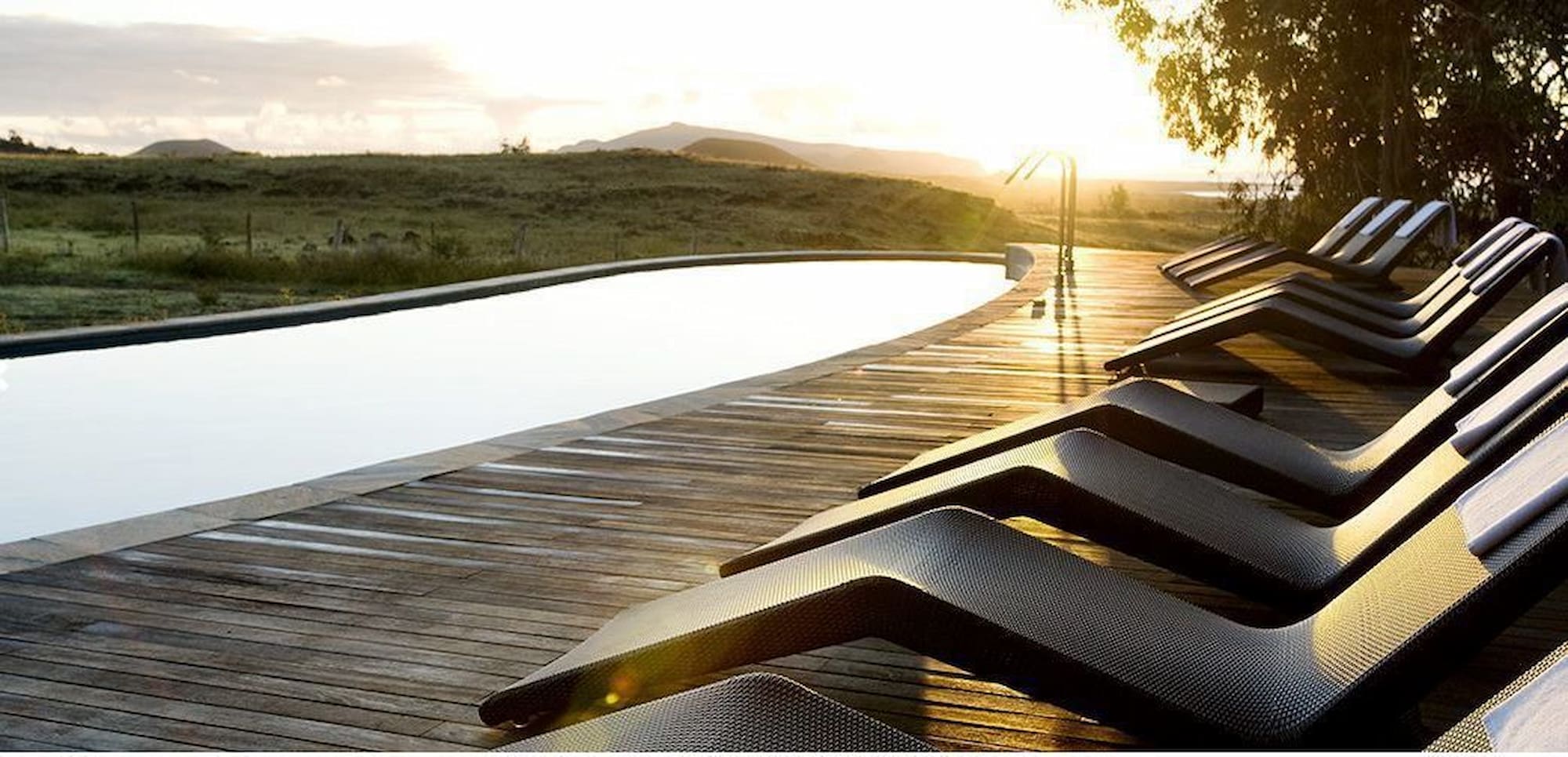
The outdoor pool of the Explora boutique hotel...not a shabby place to retreat to at the end of a day’s exploration!
Visiting Easter Island is as much about experiencing a unique culture and discovering a place that still feels lost to time as it is about seeing those incredible statues.
At Viva Expeditions, we offer tailor-made experiences, from fully guided itineraries to boutique lodge-based stays. More importantly, we can take care of every aspect of your journey to South America, from a longer layover in Santiago and other Chilean highlights, to local guides, and your preferred accommodation on Rapa Nui.
Intrigued to know more?
Contact our Destination Specialists today and start planning the Rapa Nui trip you've always dreamed about!
Laura PattaraLaura Pattara writes for Viva Expeditions with a special love for all things Latin America. She has guided overland tours across the continent, reached Machu Picchu five times on foot, and even dressed up as a giant toucan for Carnaval. With a degree in languages and two decades of global travel experience behind her, Laura has a long-standing love for the Andes, soaring condors, and a truly delicious empanada. |

Come and discover the mysteries of this isolated South Pacific Island, Easter Island, otherwise known as Rapanui, and witness mythical Moai statues.
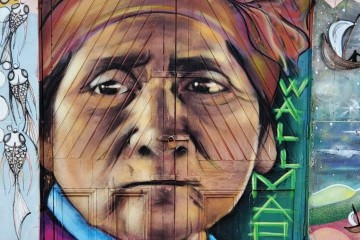
Fall in love with Santiago on our signature city break. Visit the highlights of the city, the local wine valleys and the colourful town of Valparaiso.
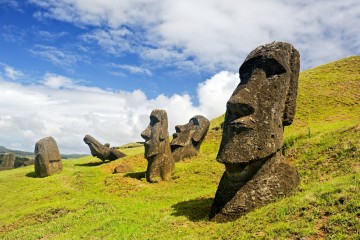
Luxury Tours: We design unique luxury holidays that allow you to experience the most spectacular and remote parts of the world. From the best hotels and lodges to luxury small ship cruises and exclusive heli-tours.
Explore remote and mysterious Easter Island from the well located boutique lodge Explora Rapa Nui, and witness the enormous carved stone Moai.